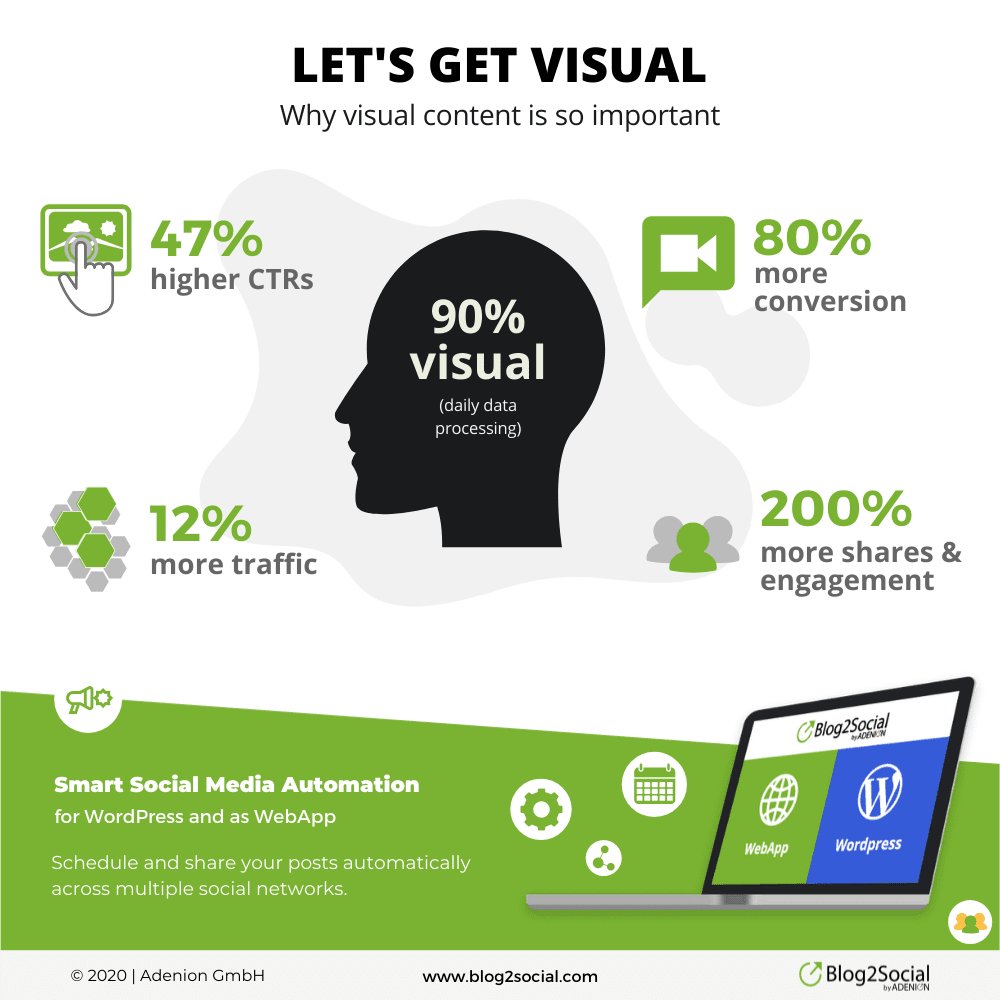A well-structured article is fun to read and easy to understand. Learn how to turn your draft into a perfect blog post to maximize the readability of your content.
The average attention span of a human reader in today’s news media is less than 8 seconds. That’s less than the attention span of a goldfish.
- 43% of readers skim blog posts to see if they sound worth reading before deciding whether to actually read the entire post
- The average time to read an article is 37 seconds (source: NewsCred)
The better you organize your content and divide it into smaller sections with strong subheadings, the better you can help your readers to grasp your content in the shortest possible time. A well-organized blog post helps to maximize readability for your readers. Not only for them, but also for search engines to index your blog post with suitable search queries.
The structure of a perfect blog post looks something like this:

6 steps to the perfect anatomy of your blog posts
Now that you have an overview of all the crucial factors for creating a perfectly structured blog post, there are six steps you should follow when creating your own blog post. From the headline to the promotion, there are always a few tips you should keep in mind.
1. make sure that the title of your blog post is catchy
Every great blog post starts with a captivating title to grab your audience’s attention. Make sure you have a catchy headline and that your introduction immediately attracts your readers. Eight out of ten blog visitors read your headline, but only two read the rest of your text. Write something that makes your readers want to read the rest of your post.
2. write a captivating introduction
The introduction is the first paragraph in which the topic of your article is described. If your introduction is too weak, you will lose your readers right after the headline. Use the introduction to explain the main arguments of your topic without losing the tension.
3. use the possibilities of visualization for your blog post
Visual content has never been more important than in the age of social media.

Photos, infographics, diagrams, tables, screenshots, slides and videos can help your readers understand abstract ideas or complex topics. Images and videos also help more users find your blog via Google image search or YouTube. They are then also more interested in sharing your content on their social media channels. Images and videos help you to get more users to find your blog or website via social media.
4 Optimize the text structure for your perfect blog post structure
Divide your content into easily digestible tidbits:
- As short as possible, but as long as necessary
- Divide your post into sections of less than 300 words and add an interesting subtitle to each paragraph.
- If possible, the paragraphs should contain less than 150 words
- Use italics and bold font to emphasize important sentences, keywords or important terms, but don’t use them too often
- Add bulleted lists to highlight your most important facts and tips
- Keep your sentences short and easy to understand
- Use language that corresponds to the language usage and tone of your target group
- Always proofread your blog post and check for grammar and spelling mistakes
Tools to check the readability of your blog post:
- Use the Toast SEO

SEO is about organic ranking optimization, not paid advertising. plugin to perform a basic readability check for your text structure (free and premium) - Try the Hemingway app to check readability and your style on a larger scale (free)
- Use Grammarly to fix grammatical errors and spelling mistakes and improve your writing (free and premium)
5. integrate keywords and links
To optimize your blog post for SEO
SEO is about organic ranking optimization, not paid advertising.
, use keywords that your target audience uses when searching for information on your topic. Integrate your keywords in your headline and introduction, subtitles and paragraphs, in your image and video site descriptions as well as in your links and anchorLinks can be inserted on a web page that lead to another section of the same page. To do this, a Jump label or anchor to which the jump is to be made. This helps for further details Wikipedia entry . texts.
Links are the backbone of the internet, just as they are for your blog posts. Linking your blog posts to similar posts will make your post more trustworthy as you have some authority in that area. This gives your readers more information about your topic and keeps them coming back to your website.
Use strong calls to action to get your readers to read or comment on your post. Invite them to subscribe to your blog or take away bonus material by leaving their email address.
Tools for SEO
SEO is about organic ranking optimization, not paid advertising.
optimization of your blog posts:
- Use the Yoast SEO
 What is Yoast SEO? Yoast SEO is one of the most popular WordPress plugins for search engine optimization (SEO). It offers a comprehensive range of tools with which you can improve the SEO of your website, optimize the readability of your content and increase the performance of your pages in the search engines. From analyzing your texts to creating sitemaps... plugin to support your blog and posts with basic SEO
What is Yoast SEO? Yoast SEO is one of the most popular WordPress plugins for search engine optimization (SEO). It offers a comprehensive range of tools with which you can improve the SEO of your website, optimize the readability of your content and increase the performance of your pages in the search engines. From analyzing your texts to creating sitemaps... plugin to support your blog and posts with basic SEO
SEO is about organic ranking optimization, not paid advertising. optimization. (free and premium) - Use keywordtool.io or ubersuggest.io to find keywords related to your topic (free and premium)
6. promote your blog posts on social media to generate more readers from social platforms
No matter how perfect your blog post structure and content is, you have to promote your posts like hell. Social networks help your content build authority, inbound links and reach. The more you promote your blog, the more this helps your ranking and visibility. By sharing your content on social media, you can drive more readers to your website. There are several social sites where you can share both your content and your images.
- Share your content on Twitter, Facebook, but also consider Reddit, Instagram, Pinterest and Flickr as well as LinkedIn if your content is business related.
- Also share your content on relevant Facebook and LinkedIn groups or Reddit subreddits.
- Share your content as Google Posts in your Google My BusinessGoogle My Business (GMB) is a platform or interface provided by Google that bundles various group services and enables users to access them directly using a dashboard. If you use Google My Business, you can increase the chance of being displayed in Google's Local Pack, the Local Finder, on Google Maps and in the organic rankings. Qualified local companies can... listing.
- Share your content in social bookmark communities like Diigo or Digg.
- Republish and syndicate your content on platforms like Medium, Tumblr, Bloglovin, Quora and LinkedIn Pulse.
- Share and promote your content on social networks at different times and days and customize your comments with personal comments, hashtags or handles for each channel. Use social media automation for planning and consistency.
Tip: Set up a social media cross-promotion plan to schedule and share blog posts on social media.
Source: https://www.blog2social.com/en/blog/the-anatomy-of-a-perfect-blog-post-infographic/
Dieser Beitrag ist auch verfügbar auf:
![]() Deutsch (German)
Deutsch (German)

